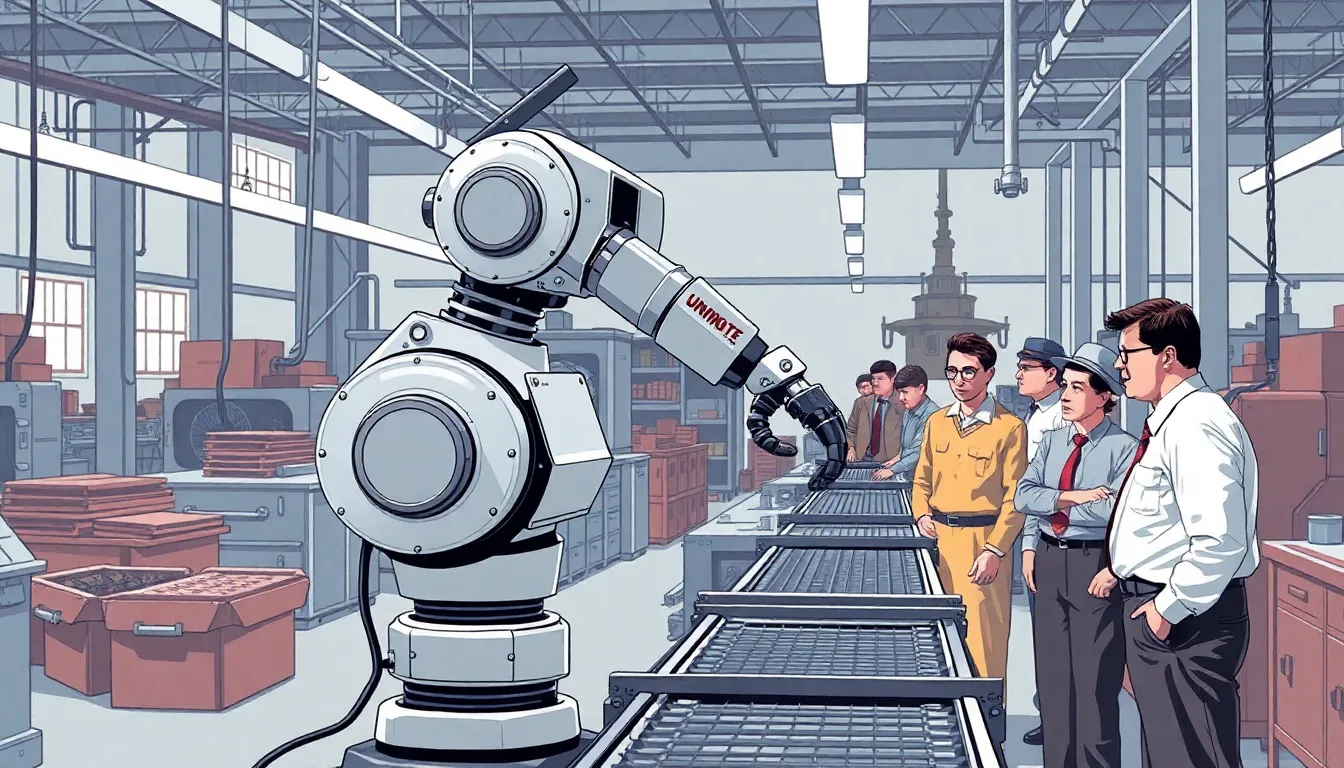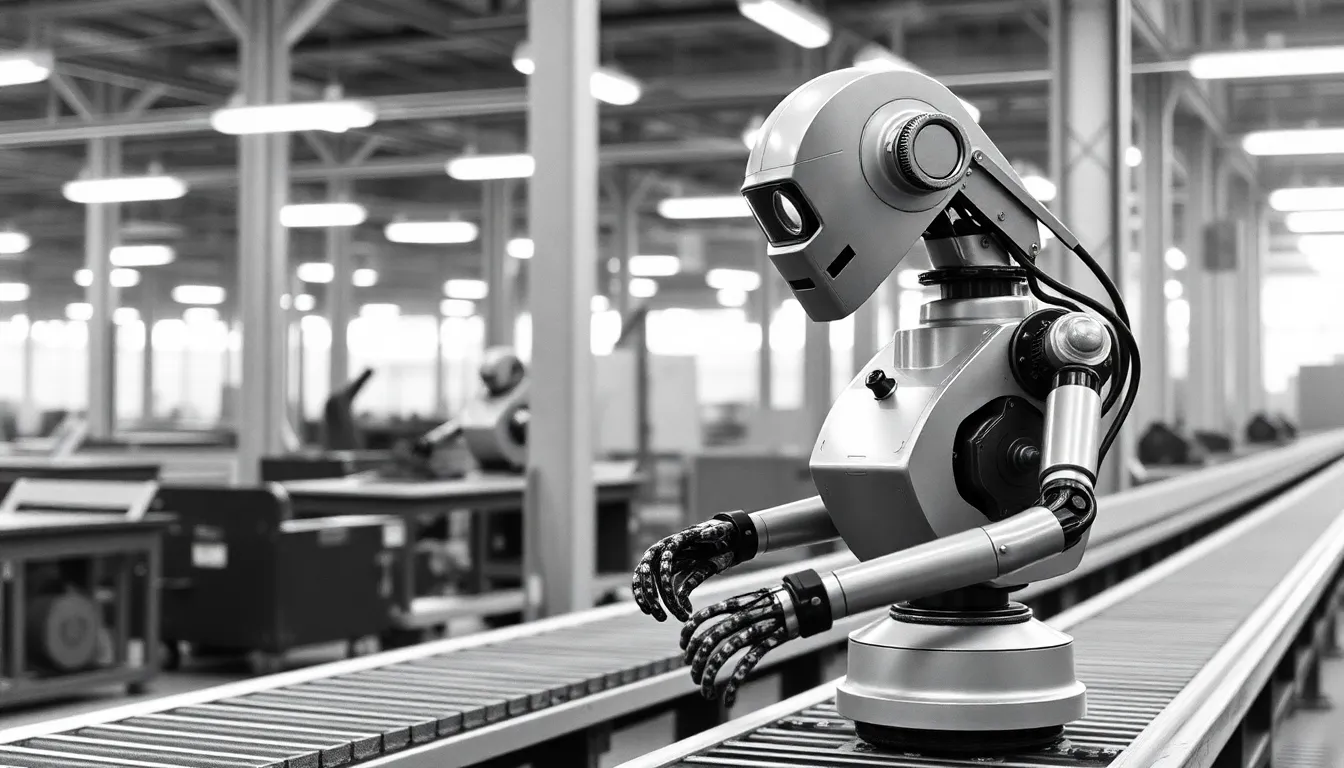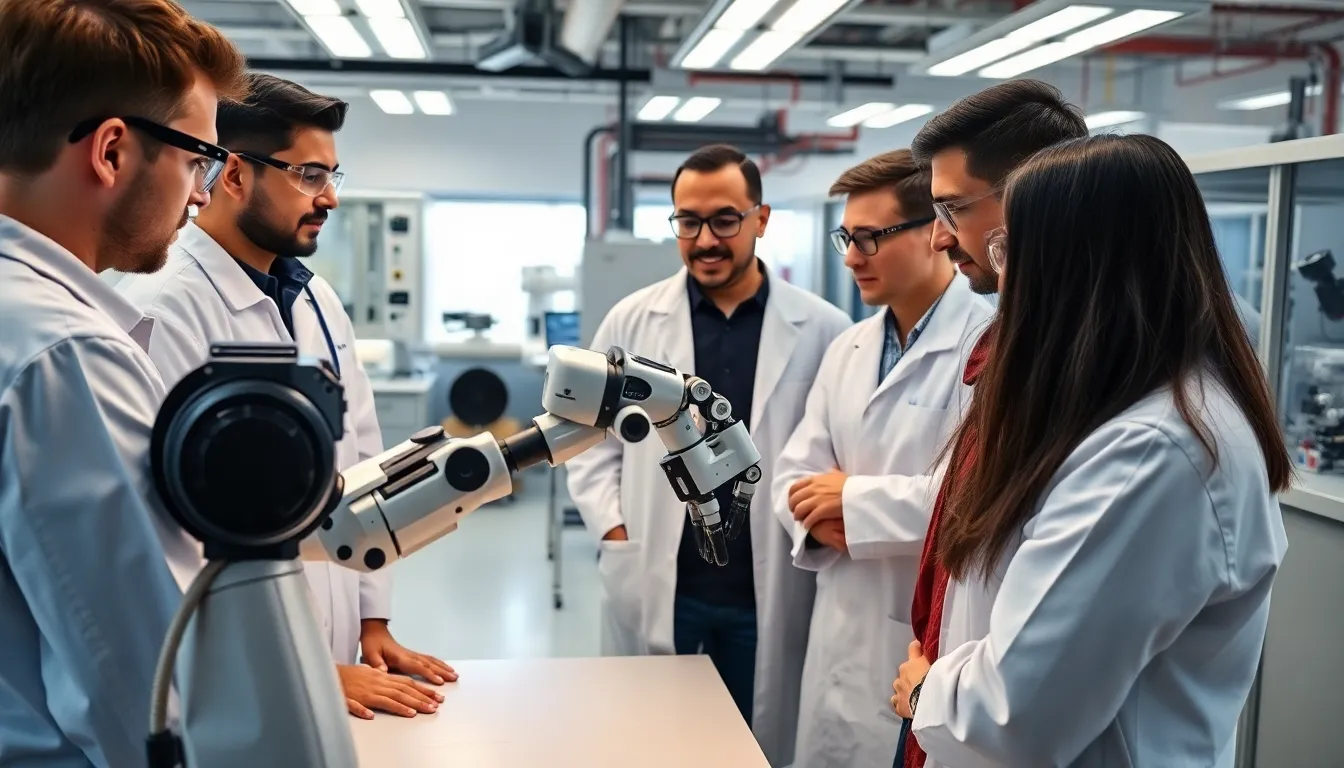American robotics is revolutionizing industries faster than you can say “automated assembly line.” From self-driving cars to robotic vacuum cleaners that know how to dodge your cat, these innovations are reshaping the way people live and work. With the U.S. leading the charge, it’s clear that the future is not just coming—it’s already here, and it’s got wheels.
But wait, there’s more! As companies race to integrate cutting-edge technology, American robotics isn’t just about efficiency; it’s about creativity and fun. Imagine a world where robots handle the mundane while you focus on the important stuff—like binge-watching your favorite shows. Dive into the world of American robotics, where the possibilities are endless and the robots are almost ready to take over the world (but not quite yet).
Table of Contents
ToggleOverview Of American Robotics
American robotics encompasses a wide range of technologies that transform everyday activities and industry practices. Innovations such as self-driving cars and robotic vacuum cleaners showcase the impact of robotics on daily life. The U.S. leads in developing autonomous systems, particularly in sectors like transportation and home automation. Efficiency remains a core focus, yet creativity and enjoyment play significant roles in the ongoing advancements.
Robotic systems increasingly learn and adapt, improving functionality over time. For instance, numerous companies are integrating artificial intelligence into robots, enhancing their decision-making capabilities. Manufacturing sees substantial benefits from robotics, with many factories using automation to streamline production processes. Data from the International Federation of Robotics indicates that the U.S. ranks among the top nations for new industrial robot installations, affirming its dominance in this field.
The implications of robotics reach beyond mere productivity. Robotic applications also promote safety, particularly in hazardous environments where human presence is risky. Healthcare is another area revolutionized by robotics, featuring surgical robots that assist doctors with precision tasks. These innovations alleviate strains on healthcare professionals, allowing them to focus more on patient care.
Future predictions suggest robotics will further integrate into everyday life, shifting how individuals approach mundane tasks. As robots take over routine chores, people gain more leisure time. By enhancing creativity and productivity, American robotics fuels imagination about future possibilities. The vision for robotics prominently features a collaborative relationship between humans and machines, marking an exciting era of innovation.
History Of American Robotics


American robotics has evolved significantly since its inception. Pioneering developments in robotics set the stage for current advancements, creating a foundation for future innovations.
Early Developments
The origins of American robotics trace back to the mid-20th century. In 1956, George Devol introduced the first programmable robot, Unimate, which was designed for industrial use. By the 1960s, advancements in computer technology enabled robots to complete more complex tasks in manufacturing environments. In 1961, GM integrated Unimate on an assembly line, marking a pivotal moment in automation. Research institutions, like MIT, began exploring robotics in academic settings, further fostering innovation. These early milestones laid crucial groundwork for robotics, demonstrating the potential of machines to enhance efficiency.
Key Innovations
American robotics has achieved numerous key innovations over the decades. The introduction of industrial robots in the 1980s revolutionized manufacturing, with several companies adopting automation to boost productivity. In the 1990s, the development of artificial intelligence led to significant improvements in robot autonomy and decision-making. Autonomous vehicles emerged in the 2000s, showcasing robots’ capability to navigate complex environments. Additionally, surgical robots, such as the da Vinci Surgical System, transformed healthcare by assisting in minimally invasive procedures. These innovations underscore the impact of robotics across various sectors, continually reshaping the landscape of technology and production.
Current Trends In American Robotics
American robotics is experiencing a surge in innovative applications across various sectors. Prominent trends focus on enhancing efficiency and safety while transforming tasks traditionally performed by humans.
Industrial Automation
Industrial automation remains a key focus within American robotics. From manufacturing to logistics, companies increasingly rely on robots to streamline processes. In 2022, the U.S. saw a record installation of 38,000 industrial robots, showcasing a 28% rise compared to previous years. Robots improve precision and reduce production time, allowing businesses to allocate resources more effectively. Additionally, automation enhances workplace safety by performing risky tasks, such as welding or assembly in hazardous environments. Many organizations are now investing in collaborative robots, or cobots, designed to work alongside human employees, fostering a more efficient and adaptable workforce.
Robotics In Healthcare
Healthcare robotics is revolutionizing patient care and surgical procedures. Surgical robots, such as the da Vinci Surgical System, enable minimally invasive operations, enhancing precision and recovery times. A significant increase in surgical robot usage occurred in the last decade, with over 10,000 systems currently installed in hospitals across the country. Robots also aid in rehabilitation, providing personalized physical therapy regimes to patients. Beyond surgeries, robotic systems assist with medication dispensing and patient monitoring, improving overall healthcare outcomes. These advancements highlight robotics’ pivotal role in transforming healthcare delivery, making it more efficient and accessible for patients.
Future Prospects Of American Robotics
American robotics is on the brink of significant transformation, driven by continuous advancements and innovative applications. This evolution promises to reshape daily life, work environments, and numerous industries.
Advancements In AI And Machine Learning
Innovations in artificial intelligence enhance robot capabilities. Improved algorithms allow robots to learn from their environments and adapt to various tasks. Deep learning techniques enable autonomous systems to process vast amounts of data, fostering more intelligent decision-making. In 2023, leading research shows a 30% increase in AI integration within robotic systems, enhancing performance and efficiency across sectors. The rise of AI-powered robots leads to increased accuracy in tasks such as surgical procedures and industrial automation. Each development reinforces the potential for smarter, more responsive robotic systems in the near future.
Potential Impact On Employment
The integration of robotics into the workplace raises questions about employment dynamics. Automation could replace specific roles, particularly those involving repetitive tasks. Current data indicates that 20% of jobs in manufacturing could transition to robotic systems by 2025. However, robotics also creates new opportunities, emphasizing skills in programming, maintenance, and oversight of robotic systems. The workplace will increasingly demand human-robot collaboration, enabling employees to focus on creativity and problem-solving. Adapting workforce training initiatives can prepare individuals for these new roles, ensuring a balanced transition in the employment landscape.
Challenges Facing American Robotics
American robotics faces multiple challenges that may hinder its growth and development. These challenges include regulatory issues and ethical considerations.
Regulatory Issues
Compliance with regulations poses a significant hurdle for companies in the robotics sector. Navigating varying state and federal laws can complicate development and deployment timelines. For instance, self-driving vehicles encounter strict state regulations, which differ across the U.S. Moreover, liability concerns create uncertainty regarding accountability in case of accidents. This often results in delays in innovation, as companies must ensure their products meet safety and performance standards. Additionally, industry players advocate for cohesive regulatory frameworks to streamline processes and boost advancement.
Ethical Considerations
Ethical considerations play a crucial role in shaping public perception and acceptance of robotics. Decisions made by autonomous systems raise questions about accountability, especially in sectors like healthcare and transportation. For example, when surgical robots assist in procedures, accountability for outcomes becomes complex. Privacy concerns also emerge as robots collect data during operations, necessitating robust data protection measures. Fairness in job displacement impacts society, with automation potentially replacing roles in manufacturing. Addressing these ethical concerns fosters trust, guiding responsible integration of robotics into everyday life.
The landscape of American robotics is evolving rapidly and reshaping how people live and work. With innovations enhancing efficiency and creativity, the potential for robots to handle mundane tasks is becoming a reality. This shift not only promotes productivity but also opens doors for individuals to explore more fulfilling pursuits.
As robotics continues to advance, the integration of artificial intelligence is set to revolutionize various sectors. The balance between leveraging automation and addressing employment concerns will be crucial for a harmonious transition. Embracing these changes while navigating regulatory and ethical challenges will pave the way for a future where humans and robots collaborate seamlessly, driving innovation and improving quality of life.




